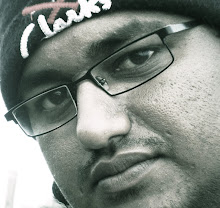
Hariharan's magnum opus 'Pazhassi Raja' would have a global release on Ramzan, when the film would be simultaneously released in Malayalam, Hindi, Tamil and Telugu on 525 screens across the world.
The film is believed to be the costliest ever production in the history of Malayalam cinema with the budget having exceeded a staggering twenty six crores.
Veteran script writer M T Vasudevan Nair who has penned the script, has relied on several authentic resources including the Malabar Manual for reliable facts that made up the brave warrior's life.
The rerecording done by musical maestro Illayaraja has the Hungarian symphony lending that magical touch to the whole affair. Oscar winner Resul Pookkutty who has done the Sound designing has spent months on recreating those yester years.
The film has a mammoth cast led by none other than Mammootty in the title role, and supported by Sharath Kumar, Kaniha, Padmapriya, Linda Arsenio, Manoj K Jayan, Suresh Krishna, Jagathy Sreekumar and several other prominent Indian and foreign actors.
With Ramazan round the corner, the long wait for the film that took about two and a half years to complete is finally drawing to a close.
Synopsis
The Sepoy Mutiny of 1857 is considered to be the first organized revolt against British rule and as the first step in India's struggle for independence. But more than half a century prior to that, Kerala Varma Pazhassi Raja of the Padinjare Kovilakom of the Kottayam family, irked by the unpopular revenue policy followed by the East India Company in Malabar, threatened to cut down all the pepper vines if the Company persisted in revenue collection. A determined but futile attempt was made by the British to capture the Raja in his own palace at Pazhassi in April 1796.
Subsequently a proclamation was issued forbidding people from supporting the Raja, threatening confiscation of their property if they did so. In January 1797 the Raja's men launched daring attack on the security personnel stationed at Pazhassi, exterminating the entire party save one. In pitched battles fought over three days, the Raja's men using swords, spears, bows and arrows, overpowered the British forces armed with muskets. The British had to sign a temporary truce.
When the occupying forces broke the terms of the truce, the Raja revolted again, but by then the British had control over most of the south. The Raja, accompanied by his wife and immediate attendants, took refuge in the jungles. In 1804 the Raja's properties were confiscated and a reward was proclaimed for his head. Towards the end of 1805, the Raja was surrounded and shot dead by the side of a stream.

No comments:
Post a Comment